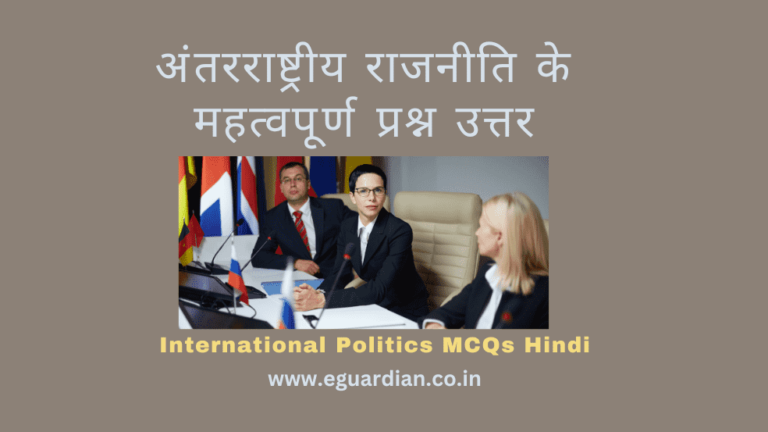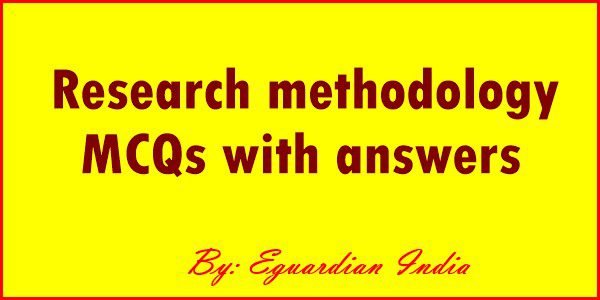Global Business Environment MCQs with Answers – Set1
Global Business Environment MCQ Multiple Choice Questions with Answers: These notes are useful for the preparation of various competitive and academic exams like UGC, NET, BCOM, MCOM, MBA, BBA, and many other regular and distance education exams.

Global Business Environment
The global business environment refers to the interconnected and complex network of factors that influence businesses operating on a global scale. This environment encompasses various elements such as economic conditions, political stability, legal frameworks, technological advancements, socio-cultural trends, and environmental considerations, among others.
Understanding the global business environment is crucial for businesses to thrive and remain competitive in today’s interconnected world.
Key aspects of the global business environment
Here are some key aspects of the global business environment:
1. Economic Conditions: Economic factors, including GDP growth, inflation rates, exchange rates, and interest rates, significantly impact global business operations. Businesses need to monitor economic trends and adjust their strategies accordingly to capitalize on opportunities and mitigate risks.
2. Political Stability and Legal Frameworks: Political stability and legal frameworks vary across countries and regions, affecting business operations, trade agreements, taxation policies, and regulatory compliance. Businesses must navigate diverse political landscapes and adhere to local laws and regulations to ensure legal and ethical conduct.
3. Technological Advancements: Rapid technological advancements, such as artificial intelligence, blockchain, and automation, are reshaping industries and disrupting traditional business models. Businesses must embrace innovation and leverage technology to enhance efficiency, improve productivity, and meet evolving customer demands.
4. Socio-Cultural Trends: Socio-cultural factors, including demographics, consumer preferences, lifestyles, and cultural norms, influence market dynamics and consumer behavior. Businesses need to conduct thorough market research and tailor their products, services, and marketing strategies to different cultural contexts to resonate with diverse audiences.
5. Environmental Considerations: Environmental sustainability and corporate social responsibility (CSR) have become increasingly important in the global business landscape. Businesses are expected to adopt environmentally friendly practices, reduce carbon footprints, and address social issues to build brand reputation and meet stakeholder expectations.
6. Globalization and Trade: Globalization has led to increased interconnectedness and interdependence among economies, facilitating cross-border trade, investment, and collaboration. Businesses must adapt to the dynamics of global markets, navigate trade barriers, and explore opportunities for international expansion.
Global Business Environment MCQ Multiple Choice Questions
Global Business Environment Multiple Choice Questions with answers are available here:
1. Geographical indications specify
A. Place of origin of goods.
B. Special characteristics of the product are associated with the place of origin.
C. Place and special characteristics of the product.
D. Place or special characteristics of the product.
Answer: (C)
2. Business across several countries with some decentralization of management decision-making to subsidiaries is
A. Global business.
B. Multinational business.
C. Transnational business.
D. Multi-regional business.
Answer: (B)
3. Land as a factor of production is immobile
A. Within the region.
B. Between the countries.
C. Within the nation.
D. In all cases.
Answer: (D)
4. Immobility of labour among nations is
A. Absolute.
B. Relatively of a higher degree than among regions in the same country.
C. Relatively easier than movement within the country.
D. Of the same degree as within the country.
Answer: (B)
5. Uneven distribution of natural resources
A. is the only cause for international business.
B. is the major factor for international business.
C. is among the major factors for international business.
D. is not a cause for international business.
Answer: (C)
6. The following factor does not differentiate international business from domestic business
A. different currencies
B. product quality
C. product mobility
D. trade policies
Answer: (B)
7. Free international trade maximizes world output through
A. Countries specializing in the production of goods they are best suited for.
B. Reduction in taxes.
C. Increased factor income.
D. Encouraging competition.
Answer: (A)
8. International business does not result in the following
A. Innovation is encouraged.
B. International cooperation is encouraged.
C. Imports are rendered cheap.
D. Consumption is minimized.
Answer: (D)
9. By entering into international business, a firm expects an improvement in
A. Marketing.
B. All spheres of marketing, operation, and finance simultaneously.
C. Any or all spheres of marketing, operation, and finance.
D. Finance only.
Answer: (C)
10. By having business in different countries, a firm reduces
A. credit risk.
B. political risk.
C. financial risk.
D. business risk.
Answer: (B)
11. Wholly owned subsidiary can be set up
A. as a Greenfield venture.
B. to acquire an existing firm.
C. to have products marketed overseas.
D. to have management is overseas.
Answer: (A)
12. The essential feature of FDI is
A. Investment of very high value.
B. Investment in shares.
C. Investor’s influence on the management of the enterprise.
D. Investment of low value.
Answer: (C)
13. No new investment in the host country is created in the case of
A. Greenfield FDI.
B. Acquisition.
C. Horizontal FDI.
D. Vertical FDI.
Answer: (B)
14. A firm investing in a foreign country to distribute the products therein creates of
A. Asset-seeking FDI.
B. Backward vertical FDI.
C. Forward vertical FDI.
D. Distribution FDI.
Answer: (C)
15. The disadvantages of Greenfield FDI as compared to acquisition is
A. Profit will be less.
B. Size of the investment will be high.
C. Lesser control in management.
D. Delay in the establishment.
Answer: (D)
16. Conglomerate FDI refers to
A. FDI made by a group of firms.
B. FDI made in subsidiaries.
C. FDI made in similar products.
D. FDI made in unrelated products.
Answer: (D)
17. Countries/ regions with huge market size will attract
A. Market seeking FDI.
B. Efficiency seeking FDI.
C. Vertical FDI.
D. Created assets seeking FDI.
Answer: (A)
18. The following statement with respect to culture is false
A. Culture is enduring.
B. Culture is changing.
C. Culture is evolved among the members of society.
D. Culture is determined by national boundaries.
Answer: (D)
19. The following is not a component of culture
A. Attitudes.
B. Beliefs.
C. Education.
D. Life expectancy.
Answer: (D)
20. Non-verbal communication
A. includes written communication.
B. has no place in international business.
C. includes body language.
D. should be learned by business managers to communicate with foreigners.
Answer: (C)
21. Religion of a person affects his/her
A. attitude towards entrepreneurship.
B. gifting practices.
C. use of products.
D. all of the above.
Answer: (D)
22. For society, religion has no influence on
A. holidays.
B. language.
C. role of women.
D. marketing practices.
Answer: (B)
23. The role of women is restricted in
A. Eastern countries.
B. Middle East countries.
C. Traditional Islamic countries.
D. India.
Answer: (C)
24. The following nationals would be aggressive at the beginning of business negotiations but offer large concessions in the end
A. American.
B. Russian.
C. German.
D. Japanese.
Answer: (B)
25. Social stratification is done on the basis of
A. Income level.
B. caste.
C. education.
D. any of the above.
Answer: (D)




Hi my loved one! I want to say that this post is awesome,
nice written and come with almost all significant infos.
I would like to peer more posts like this .